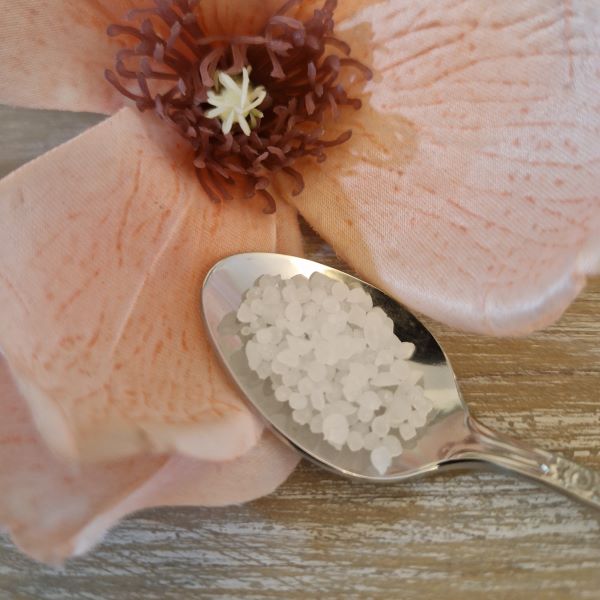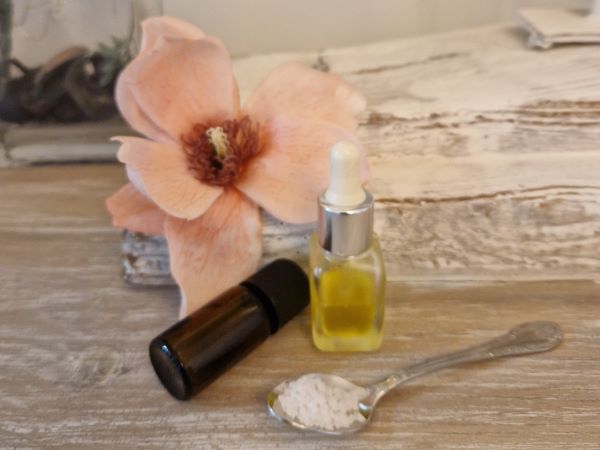As a passionate DIY cosmetics formulator, I've always found joy in experimenting with various ingredients to create unique textures and formulations. Recently, while delving deeper into the world of oil-based cosmetics, I encountered a common challenge: adjusting the thickness of my creations.
During my texture experiments, I found myself faced with unexpected outcomes, such as a face oil that turned out thicker than intended due to an excess of cetearyl alcohol (10%) and was too viscous to dispense from the pipette flask I was using.
The first thought that crossed my mind was: "Now what? Do I have to throw everything away?" I was perplexed about how to salvage the mixture from the small flask now that it had become too thick. However, the solution turned out to be simpler than expected: I heated the flask to liquify the content again, poured it into a beaker, and then added more oils after doing some calculations, which I'll explain in this article.
Despite feeling frustrated, I discovered that these moments of trial and error were invaluable learning experiences.
Through careful observation and experimentation, I used a simple yet effective method to remedy the situation. By reevaluating the composition of my formula and recalculating the ingredient ratios, I was able to restore the desired consistency to my cosmetic product.
In my journey of raw materials exploration, I've come to appreciate the unique properties of cetearyl alcohol, which impart a luxurious texture to cosmetics, rendering them rich and velvety. This ingredient, among others, has become a focal point of my studies as I seek to enhance the sensory experience of my formulations.

Oil-based cosmetics have an unique ability to deliver active ingredients deep into the skin, providing nourishment and hydration where it's needed most. This, coupled with the absence of preservatives, makes them an appealing option for natural skincare enthusiasts like myself.
In essence, every mistake and adjustment in our formulation process are a valuable lesson, guiding us toward greater understanding and mastery of the art of DIY cosmetics. And it's my pleasure to share these insights with you, fellow wonderlabbers!
In sharing this article, I hope to offer you a practical solution to a common challenge.
Here's a step-by-step guide to fixing the thickness issue of a oleogel:
1 - Reheat and Remix:
Begin by gently heating the thickened cosmetic mixture until it returns to a liquid state. Once it's liquefied, carefully transfer it into a heat-resistant container such as a beaker.
In my case, the mixture was in a glass flask, so I had no other option but to heat it directly from there. I then poured the liquefied content into a beaker as soon as it returned to its liquid state.
If your mixture is in a plastic container, it may be more challenging to heat it properly, as plastic cannot withstand high temperatures. Therefore, it's advisable to use glass containers when testing textures and oil gels. However, be cautious not to overheat, as the glass of a simple flask may not be very resistant to heat.
2 - Adjusting the Density:
To address the thickness problem, we'll need to adjust the density of the mixture. Since we want to reduce the cetearyl alcohol content to 6%, we'll achieve this by adding more oil to the mixture. The original formula had the 10%.
Calculating the Additional Oil:
To determine the amount of additional oil required, we need to calculate the new total weight of the mixture. Let's assume the original batch weighed 10 grams, with 1 gram of cetearyl alcohol already present. We want the cetearyl alcohol content to comprise 6% of the total weight. Here's how we calculate the additional oil needed:
Original Batch Parameters:
- Original batch weight: 10 grams
- Original cetearyl alcohol content: 1 gram (10% of 10 grams)
- Desired cetearyl alcohol content: 6%
Step 1: Calculation of the New Total Weight
Desired Cetearyl Alcohol Content: The desired cetearyl alcohol content is 6% of the total weight. To use the percentage in a calculation, we first convert it to a decimal. In our case, 6% becomes 0.06 as a decimal.
Desired Cetearyl Alcohol Content in grams: In this case the desired content is the amount of cetearyl alcohol that we already have in the original batch (1 gram).
To find the total weight required to achieve the desired cetearyl alcohol content (6%), we use the formula:
Total weight formula = Desired cetearyl alcohol content in grams / Desired Cetearyl Alcohol Content
Substitution and Calculation: Given that the desired cetearyl alcohol content is 1 gram (which is the amount we already have in the original batch) and we want it to be the 6%, we substitute this value into the formula:
Total weight = 1 gram / 0.06 ≈ 16.67 grams.
Step 2: Determination of Additional Oil Needed
Once we have calculated the new total weight required for the adjusted cosmetic formula, we determine the amount of additional oil needed to reach this total weight. We do this by subtracting the original weight of the formulation (10 grams) from the newly calculated total weight (16.67 grams):
Additional oil = New total weight - Original weight.
Substituting the values:
Additional oil = 16.67 grams - 10 grams ≈ 6.67 grams.
Conclusion:
The new total weight should be 16.67 grams, and you'll need around 6.67 grams of additional oil to adjust the thickness of the cosmetic.
In this adjusted batch:
- The percentage of cetearyl alcohol remains at 6% of the total weight.
- The percentage of oil increases to approximately 94% of the total weight.
3 - Thorough Mixing:
After adding the necessary amount of oil (6.67 grams), thoroughly mix the ingredients to ensure uniform distribution.
By following these detailed steps and calculations, you can effectively adjust the thickness of your oil-based cosmetics to achieve the desired texture and consistency. With a bit of calculation and experimentation, you'll be able to rescue your formulations and create cosmetics that fit your needs.

Extra DIY Cosmetics formulator tips:
- Work with small batches when experimenting with ingredients. This not only prevents wastage but also allows for easy adjustments, like the one discussed here.
- Always measure ingredients in grams (or other similar units) and convert them into percentages. This practice not only provides consistency but also aids in future formulations and adjustments.
- Be mindful that certain characteristics, such as thickness, may change over time. For example, when adding 10% cetearyl alcohol, the texture may initially appear liquid but could thicken overnight or within a few hours. Always observe and document any changes in your formulations over time.
- Conduct thorough research on the compatibility and interactions of ingredients before formulating. Understanding how ingredients behave together can prevent unexpected texture or performance issues.
- Keep detailed records of your formulations, including ingredient percentages and any adjustments made. This helps in troubleshooting and refining your recipes in the future.
- Experiment with different thickeners and viscosity modifiers to achieve the desired texture in your oil-based cosmetics. Each thickener has unique properties that can impact the final product, so don't hesitate to explore various options.
- Consider the nature of your formulation: These instructions and calculations are tailored for oil-based cosmetics, particularly those comprising oils and thickeners. However, similar principles can be applied when working with other types of thickening agents such as butters and waxes. Keep in mind that the behavior of these ingredients may vary, so adjustments may be necessary.
- If your formulation already contains liquid active ingredients, consider them as part of your oil phase when recalculating percentages for the thickener. Then, make your calculations to re-adjust and know their new % in the formula.
However, when experimenting with thickeners, it's advisable to work with small batches first to assess consistency before adding costly or sensitive ingredients. - While thisprocedure is suitable for simple oil-based cosmetics like face oils and lotion bars, you can apply the same logic to other formulations. However, note that emulsions and other complex formulations may respond differently and could require different strategies.
- Regardless of the type of formulation, maintaining accurate records of your experiments, adjustments, and outcomes is invaluable. This allows for informed decision-making and facilitates continuous improvement in your formulations.
Looking for more DIY Cosmetics guides? Click here!

